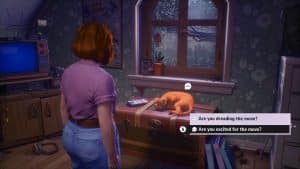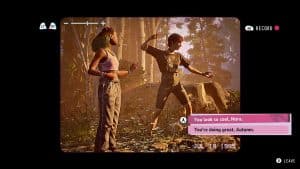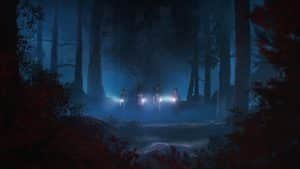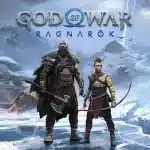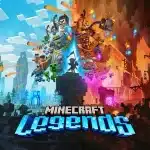Lost Records: Bloom and Rage
Related Games
Description
🔥 What is Lost Records: Bloom and Rage for PC?
Lost Records: Bloom and Rage is a narrative adventure game developed by Don’t Nod, the same studio known for the acclaimed Life is Strange series. Set in the mid-1990s, the story follows a group of four teenage girls Swann, Nora, Autumn, and Kat whose lives change forever after one fateful summer in 1995. Decades later, they reunite as adults, forced to confront the buried memories and unresolved secrets that once bound and broke them.
The game blends heartfelt storytelling with a nostalgic, cinematic presentation, emphasizing emotional choices and character-driven dialogue over traditional action. Like its predecessors, Lost Records explores themes of friendship, regret, and the irreversible passage of time, all wrapped in a slightly mysterious atmosphere that hints at something supernatural beneath the surface.
Through its distinctive narrative structure jumping between past and present the game creates a dual timeline where players experience both the innocence of youth and the consequences of adulthood. This contrast gives the story weight, allowing players to reflect on how small decisions made in adolescence can echo through an entire lifetime.
For fans of Life is Strange, Tell Me Why, or story-rich indie games, Lost Records: Bloom and Rage feels like a spiritual successor that preserves Don’t Nod’s signature warmth and melancholy while expanding its emotional range and visual style to new heights.
👉 Features of Lost Records: Bloom and Rage
A Dual-Timeline Storytelling Structure
The game’s most striking feature is its interwoven timeline, alternating between the summer of 1995 and the present day. Players experience the vitality, impulsiveness, and naivety of the protagonists’ teenage years alongside their adult selves wiser but scarred by the same past they tried to forget.
This structure builds a powerful emotional contrast: every choice made in the past ripples into the present, often reshaping the relationships and fates of the characters. It’s not just nostalgia it’s a living, breathing story about how memory shapes identity.
Deep Character Relationships
Each of the four main characters has a distinct personality, history, and arc that interlock into a believable friendship group. Swann, the introspective observer, often anchors the narrative, while Nora’s rebellious streak, Autumn’s idealism, and Kat’s quiet vulnerability create rich interpersonal tension.
Players can guide their interactions through branching dialogue and moral decisions. Every conversation feels natural and emotionally charged, enhanced by subtle motion capture and voice acting that captures the fragility and passion of friendship under pressure.
A Cinematic 1990s Setting
The 1995 segments are a loving recreation of the mid-90s American summer complete with cassette tapes, analog cameras, denim jackets, and the ambient hum of suburban life before the digital age. Don’t Nod uses this setting not just as window dressing but as a character in itself: the music, the slang, the technology, all feed into the theme of lost youth.
Soundtracks filled with grunge and soft rock underscore the emotions of each scene, evoking that bittersweet blend of freedom and confusion that defines adolescence.
Emotional Choice and Consequence
Like Life is Strange, Lost Records revolves around difficult choices and moral dilemmas that test players’ empathy and integrity. However, instead of supernatural powers, it leans entirely on human emotion trust, betrayal, guilt, forgiveness.
Decisions can alter dialogue, relationships, and even the outcome of the present-day storyline. Yet the game resists simple binaries of good or evil; instead, it presents messy, human consequences that feel hauntingly real.
Realistic Visuals and Animation
Don’t Nod’s new proprietary engine allows for more natural lighting, nuanced facial animation, and cinematic camera work that enhances immersion. Each scene feels like a film sequence carefully framed, lit with warmth and shadow, and full of small gestures that say more than words ever could.
The game’s color palette also shifts between timelines: warm, sun-drenched tones for 1995 contrast with the colder, muted hues of adulthood, visually embodying the emotional distance between the two eras.
Gameplay
Interactive Narrative and Exploration
At its core, Lost Records: Bloom and Rage is a narrative exploration game. Players move through detailed environments, talk to characters, inspect items, and uncover the story through memories, notes, and visual cues scattered throughout. Every space tells a story bedrooms decorated with posters, dusty attics filled with keepsakes, or quiet forest clearings frozen in time.
The focus is not on puzzle-solving but on immersion and emotional discovery. Movement is slow and deliberate, encouraging players to observe and absorb the world around them rather than rush through it.
Dialogue Choices and Relationship System
Conversations play a crucial role in shaping both past and present. Players select dialogue options that reflect emotional tone compassionate, defensive, sarcastic, or distant and these choices affect how others perceive the protagonist.
In the 1995 timeline, small gestures of loyalty or jealousy can sow the seeds of future conflict. In the present, those same dynamics resurface, forcing players to confront the long-term impact of their teenage selves. Relationships evolve organically, and no choice feels trivial.
Memory Reconstruction Mechanic
A standout feature is the “memory reconstruction” mechanic, where players revisit fragmented memories to piece together events. These moments feel almost dreamlike, blending interactive sequences with symbolic imagery that reveals hidden truths about the characters’ past actions.
Through visual storytelling such as retracing footsteps, touching significant objects, or hearing echoes of old conversations players uncover the emotional and factual layers behind the central mystery. It’s not about solving puzzles, but understanding people.
Thematic Progression and Tone
The story gradually shifts from youthful exploration to adult confrontation, mirroring the arc of growing up. What begins as a summer of adventure and laughter evolves into a bittersweet reckoning with trauma, regret, and forgiveness.
Yet, despite its heaviness, the game never sinks into pure sadness. It celebrates resilience, human connection, and the enduring possibility of healing even decades after everything seemed lost.
Graphics
Naturalistic Art Direction
The visual presentation combines photorealistic textures with painterly touches, creating a look that feels both cinematic and slightly dreamlike. Lighting plays a key emotional role: sunsets bathe 1995 scenes in nostalgia, while rain-streaked windows and soft indoor shadows define the melancholy of the present.
Character designs are grounded yet expressive, with small details like wrinkles, faded tattoos, or hairstyles conveying time’s passage and personal history. Every frame feels carefully composed, as if you’re leafing through a memory captured on old film.
Cinematic Camera and Framing
Don’t Nod uses a cinematic camera system that subtly shifts angles during dialogue or exploration to heighten emotion. Conversations feel alive, with camera pans, zooms, and focus pulls that make each exchange intimate and human.
Cutscenes transition seamlessly into gameplay, maintaining immersion. The direction feels inspired by indie cinema, particularly coming of age dramas where quiet glances often speak louder than words.
Sound Design and Music
Music is at the heart of Lost Records: Bloom and Rage. The 90s sequences pulse with nostalgic tracks—grunge guitars, lo-fi vocals, ambient instrumentals while the adult timeline relies on somber piano themes and reflective soundscapes.
Environmental audio rustling leaves, buzzing cicadas, distant thunder grounds the experience, making each scene tangible. The sound design mirrors memory itself: vivid yet slightly distorted, inviting players to feel rather than just watch.
Performance and Polish
Built with current-generation consoles and PC in mind, the game delivers smooth animation and detailed environments with minimal loading times. Subtle depth of field effects and adaptive lighting ensure emotional consistency across scenes.
Accessibility options like adjustable subtitles, color filters, and motion sensitivity settings make it inclusive without breaking immersion. Technical execution supports the story rather than distracting from it.
Pros and Cons
✔️ Pros
- Emotional and mature storytelling that explores friendship, loss, and the persistence of memory.
- Dual-timeline structure that deepens character development and narrative impact.
- Exceptional voice acting and motion capture that enhance authenticity.
- Beautiful 1990s aesthetic supported by evocative music and visual detail.
- Choice-driven narrative where consequences feel subtle yet powerful.
❌ Cons
- Slow pacing may deter players seeking more action or faster gameplay.
- Limited interactivity outside dialogue and exploration sequences.
- Occasional tonal imbalance between nostalgia and melodrama.
- Ambiguous endings that may feel unresolved for players expecting closure.
ℹ️ Game information
Release Date: 18/02/2025
Update Date: 05/10/2025
Version: v2.04.132116
Genre: Adventure
Platform: PC
Language: ![]()
![]()
![]()
![]()
![]()
![]()
![]()
![]()
Weight: 55 GB
Additional info: New version includes all DLCs to date
⭐ Installation Instructions
- The game is fully complete, you just need to install it, so there is no need to unpack it or download it from other sources.
- Just run the Lost Records Bloom and Rage.exe installation file.
- Simply launch the game from shortcut desktop.
⚙️ System Requirements
✅ Minimum:
- OS: Windows 10/11 64bit
- Processor: Intel Core i7-2700K / AMD FX-8350
- Memory: 8 GB RAM
- Graphics: NVIDIA GeForce GTX 1050 Ti, 4GB / AMD Radeon RX 560, 4GB / Intel ARC A380, 6GB
- DirectX: Version 12
- Network: Broadband Internet connection
- Storage: 55 GB available space
✅ Recommended:
- OS: Windows 10/11 64bit
- Processor: Intel Core i5-11400 / AMD Ryzen 5 5600X
- Memory: 16 GB RAM
- Graphics: NVIDIA GeForce RTX 3080, 10 GB / AMD RX 6800XT, 16GB
- DirectX: Version 12
- Network: Broadband Internet connection
- Storage: 55 GB available space
Images
